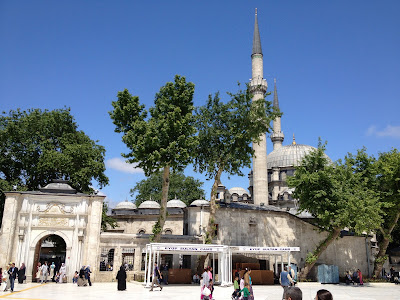History of Sophia Masjid.
Hello friends, welcome to another blog. In this blog, I talk about the history of Sophia Masjid.
Hagia Sophia.
Construction History. Construction history of Hagia Sophia Hagia Sophia was initially constructed by Emperor Constantine. However, the initial role of the Hagia Sophia was not as a place of worship, but rather it was built to serve as a basilica for the Greek church. The construction of the church was commissioned in the year 360. Constantine was the emperor of the Byzantine Empire and so the credit for building Hagia Sophia goes to the Byzantine emperor. Initially, the Hagia Sophia was built from wood and the roof was made entirely out of the wood. However, soon enough the church was burned because of the riots caused by the political conflict in the family of then-emperor Arakidos. The year this occurred was 404. After that, Emperor Arakidos stepped down as the king and was succeeded by Emperor Theodosius II. He rebuilt the Hagia Sophia and completed the new Hagia Sophia in the year 415. Unlike the previous Hagia Sophia, the new one had five naves and a monumental entrance. However, the roof of the place was still covered with wood. After one century, the Hagia Sophia was again burnt to ashes due to the fire caused by the Nika revolt. The Nika revolt was conducted against Emperor Justinian II who ruled from 527 to 565. After Emperor Justinian II saw the Hagia Sophia burnt, he ordered the reconstruction of the basilica. However, the condition was now so bad, that they had to demolish the Hagia Sophia. After destroying the Hagia Sophia the emperor ordered Isidoros (Milet) and Anthemios (Tralles), two renowned architectures to build a new basilica. He named it Hagia Sophia and it was completed in the year 537 within 6 years.
Design History. The design of the Hagia Sophia The initial design of the Hagia Sophia and the current standing Hagia Sophia had a contrasting difference. Hagia Sophia has a mix of the orthodox basilica and also has a large domed roof and a semi-domed altar with two narthexes. The domes of the newly built Hagia Sophia are covered by the mosaics of the six-winged angels which are commonly known as Hexapterygon. The newly built Hagia Sophia had new features when compared to the original Hagia Sophia. This time, the marble from which the floor and roof have been made was imported from Turkey (called Anatolia in the past) and Syria. The other bricks were brought from distant places such as North Africa. According to the studies, the interior design of the Hagia Sophia was made to look like flowing water. The roof of Hagia Sophia was made from wood and the piers were attached to support the great body and weight of the building. This led to a disbalance of the weight and the structure almost collapsed due to its weight. The building of Hagia Sophia was completed quickly and this led to its collapsing again after some time. Next, the builders thought of keeping the dome in place by supporting it with a chain, this led to some problems, and the building again collapsed due to its weight issue. Finally, Isidoros (Milet) and Anthemios (Tralles) managed to support the roof of the building just like the way it is now. This time it was more stable and that has led to the structure lasting for more than 1500 years. Another good thing to notice is that the seating plan of Hagia Sophia was divided into two levels. There were seats at the top and seats at the bottom. This division was done so that segregation of the people could take place according to their gender and class. This makes sure that the rich and powerful people always sat on the top while the lower- and middle-class people seated at the bottom when there was an event or service in the basilica. The initial interior design of the Hagia Sophia was quite simple and plain. There were no mosaics in it as there are now. When the new Hagia Sophia was built after the destruction of the original one, the murals were added on the walls by the various emperors who ruled the empire of present-day Istanbul. After the falling of the Byzantine empire, the sultan of the Ottoman Empire Mehmed II took over Istanbul and he made some changes to the Hagia Sophia. The sultan and his successors added the four minarets outside the Hagia Sophia and also added new caliphs mosaic in the interior. The pre-existing mosaics were all covered by paint and caliph were added on the pillars. In the year 1847 and 1849, the Hagia Sophia again underwent certain changes and swiss architecture style was added to the hagia Sophia. This led to the present day, Hagia Sophia.
Religious History. The religious history of Hagia Sophia Initially, the Hagia Sophia was not built as a church, but as a basilica for the church. This all happened in the reign of Constantine and his successors. However, in the year 1453, the Byzantine Empire falls prey to Sultan Mehmed II of the Ottoman Empire. They took over the Hagia Sophia and made certain changes to its design and function. From a place where the kings were crowned, the place became a worship ground for the Muslim people. Hagia Sophia Now When in 1935, the Republic of Turkey was formed, and then the government declared the Hagia Sophia as a museum that attracts people from all over the world till now. It was said that in 2020 this place would again be opened as a place for worship of the Muslim religion.
.jpeg)
.jpeg)
.jpeg)
.jpeg)

Comments
Post a Comment